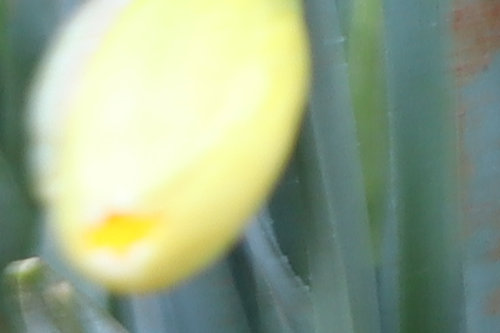Lesson 1.4 in my own words:
-
ISO (International Standards Organisation) - a measure of sensitivity to
light
-
1 of 3 options (along with
aperture
and
shutter speed) to control the amount of light hitting the camera's sensor.
-
Technical aspect: increasing ISO makes it easy to take photos in low
light.
- Creative aspect: none
-
Potential negative aspect: high ISO can degrade the quality of the
photo.
- Changing ISO
- Auto ISO - lets the camera choose
- Manual ISO - check camera manual for instructions
- When to change ISO
- On manual shutter speed
-
long shutter speed may require a lower ISO to darken the exposure
-
fast shutter speed may require a higher ISO to lighten the exposure
- On manual aperture settings
-
as depth of field increases (due to smaller aperture), more light is
needed for proper exposure.
- increasing ISO is an alternative to lengthening shutter speed,
which increases the risk of camera shake.
This week's project:
- Step 1
- Learn how to change your ISO manually.
- Find out if you have Auto ISO and in which modes it works.
- Step 2
-
Choose either the aperture or shutter speed exercise from lessons 2 or
3, and experiment with the ISO for each.
-
Don't worry about the quality of the photo (graininess/noise). The
purpose of the exercise is to begin to understand ISO through
experience.
I decided to try the homework on both aperture and shutter speed. I took these
photos at the largest resolution my camera offers (6000 pixels by 4000
pixels), which is way too large to display on this blog. So I resized them to
500 pixels by 333 pixels, to display the entire image. To get a closer
look at image quality, I also cropped a 500x333 selection from the original photo.
I started with aperture.

|
|
Large aperture (f/5.0) and low ISO (100)
|

|
|
Same photo, clip from original size
|

|
|
Large aperture (f/5.0) and high ISO (25,600)
|

|
|
Same photo, clip from original size
|

|
|
Small aperture (f/32.0) and low ISO (100)
|

|
|
Same photo, clip from original size
|

|
|
Small aperture (f/32.0) and high ISO (25,600)
|

|
|
Same photo, clip from original size
|
Then I took a second set with different shutter speeds.

|
|
Short shutter speed (1/40 sec) and low ISO (100)
|

|
|
Same photo, clip from original size
|

|
|
Short shutter speed (1/40 sec) and high ISO (25600)
|

|
|
Same photo, clip from original size
|

|
|
Long shutter speed (1/4 sec) and low ISO (100)
|

|
|
Same photo, clip from original size
|

|
|
Long shutter speed (1/4 sec) and high ISO (25600)
|

|
|
Same photo, clip from original size
|
What I learned:
- I could definitely see the point of the lesson, that photo quality
degrades with higher ISOs.
-
Since I manually controlled only two of the three things that affect exposure
(aperture, shutter speed, and ISO), and the camera compensated by
automatically adjusting the other one.
- That correct exposure is a complex task and will take a lot of practice to master (or at least get half-way decent at.)
- That my camera does a really good job compensating. (So, I'm not sure I got all the subpoints of the lesson).
-
I won't have to worry much about ISO for any photo I publish on the
internet. Graininess can't be seen after resizing them for online use, unless I crop like I did for this exercise.
-
For print photos, I'll have to take more care to avoid grainy pictures.
















No comments:
Post a Comment